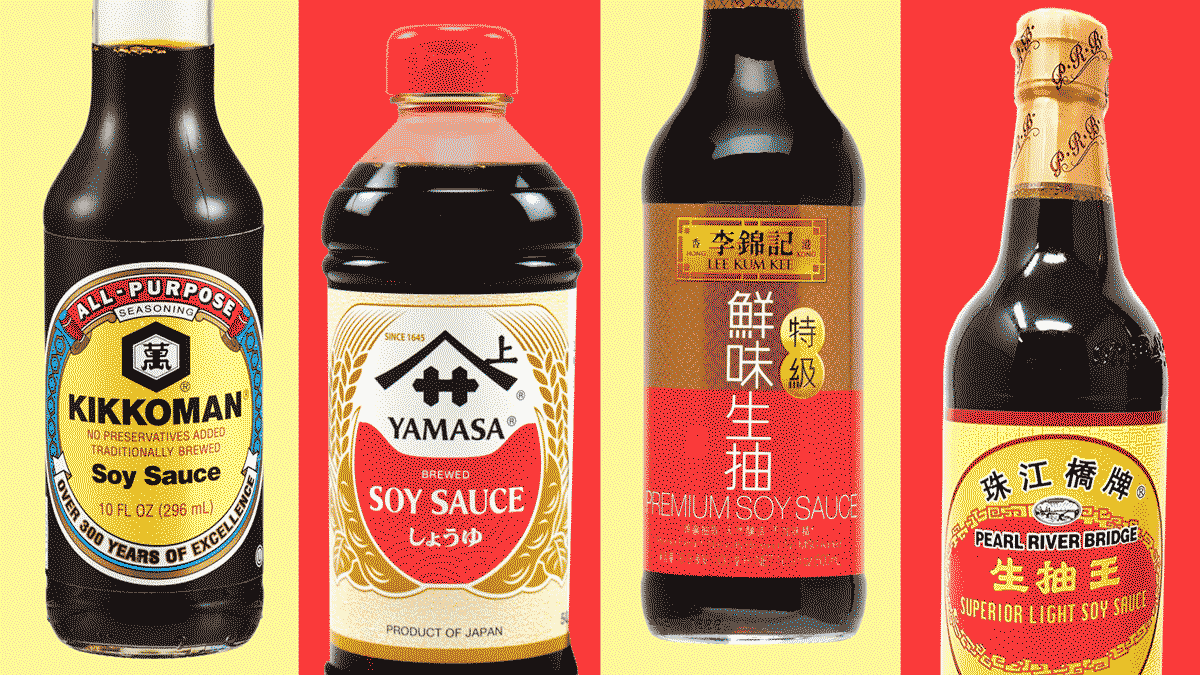
Get to know a few important styles—and treat yourself to a top-shelf bottle while you’re at it.
The first time I can say I’ve truly appreciated soy sauce was when it was drizzled on top of ice cream. A specialty of Yamato, a local soy sauce and miso shop in Kanazawa, Japan, the sauce lightly coated each contour of the rich vanilla soft serve, and I could taste every dimension of the inky swirl—complex, savory, aromatic, and caramel-like.
After years of cooking with the staple East Asian ingredient—and consuming even more of it in Cantonese steamed fish sauces, sushi platters, and stockpots of chicken adobo—I’ve started to recognize the limits of the single bottle of Kikkoman that sits on my (and possibly your) kitchen counter. At most Asian grocery stores, there’s a whole aisle dedicated to soy sauce—including everything from Chinese and Japanese brands that denote styles with names like “dark,” “light,” and “first extract,” to thicker, palm sugar–sweetened Indonesian kecap manis, to saltier Filipino toyo. Treating each of these bottles as if they’re interchangeable would be like keeping only one bottle of whiskey on hand at a cocktail bar.
For instance, dark soy sauce is the backbone of Shanghainese hong shao rou—a braising technique that builds flavor over time and gives the dish a reddish tint from a more viscous, pungent dark soy sauce. The duo of light and dark can also be used to color and flavor cong you mian (scallion oil noodles), in which chopped scallions are slowly cooked in oil, then mixed with both soy sauces and sugar for an intensely sweet, savory, and allium-heavy dish.
Side by side in their bottles, they may not look that different, but if you pour each into a small white dish, dark soy sauce appears more opaque and inky, because it’s aged longer, while light soy sauce has a milk-chocolate brown tint and translucency to it. Paired together, light soy sauce—with its thinner consistency and more versatile applications to add salty flavor—and dark soy sauce—which is stronger in deep, savory flavor and gives dishes a bolder pigment—achieve a healthy balance between saltiness and color.
As some home cooks do with balsamic vinegar or olive oil, I believe in keeping a “fancy” bottle of soy sauce around for when occasion calls for it—mine being a bottle of Higeta Honzen from Chiba, Japan. Oftentimes, a higher price tag means the soy sauce has been fermented longer, resulting in heightened subtleties, deeper nuance, and higher quality, preservative-free ingredients. I’ll use it sparingly when I want soy sauce’s flavors to really shine—like as a dipping sauce for crispy-bottomed dumplings and delicate slices of sashimi or for dressing tender greens with a soy sauce–based vinaigrette. Once you go down the soy sauce rabbit hole, you may not return.
READ UP AND STOCK UP ON SOY SAUCE, THEN COOK WITH THEM ALL
- Classic brands like Pearl River Bridge and Lee Kum Kee are reliable staples that can be used when recipes call for “soy sauce” or “light soy sauce.”
- Keeping a special occasion soy sauce around is never a bad idea. Start your collection out right with Higeta Honzen ($12), Yamaki Jozo ($29), or Zhongba ($40).
- Kecap manis is integral to Indonesian dishes like nasi goreng and ayam kecap, lending warm sweetness from palm sugar to balance out the soy sauce’s inherent umami notes. And, if you’re in a pinch, cookbook author Lara Lee has a recipe for making your own kecap manis to accompany your chicken nasi goreng.
- The “Salt” episode of Samin Nosrat’s Salt Fat Acid Heat on Netflix will convince you to seek out the good stuff. Nosrat travels throughout Japan to visit sea salt factories, miso artisans, and traditional soy sauce brewers.
- Stop calling soy sauce “soy,” argues Cathy Erway. “Writing just ‘soy’ implies that soy sauce is one and the same across the board, which many cooks know is not true,” she says.